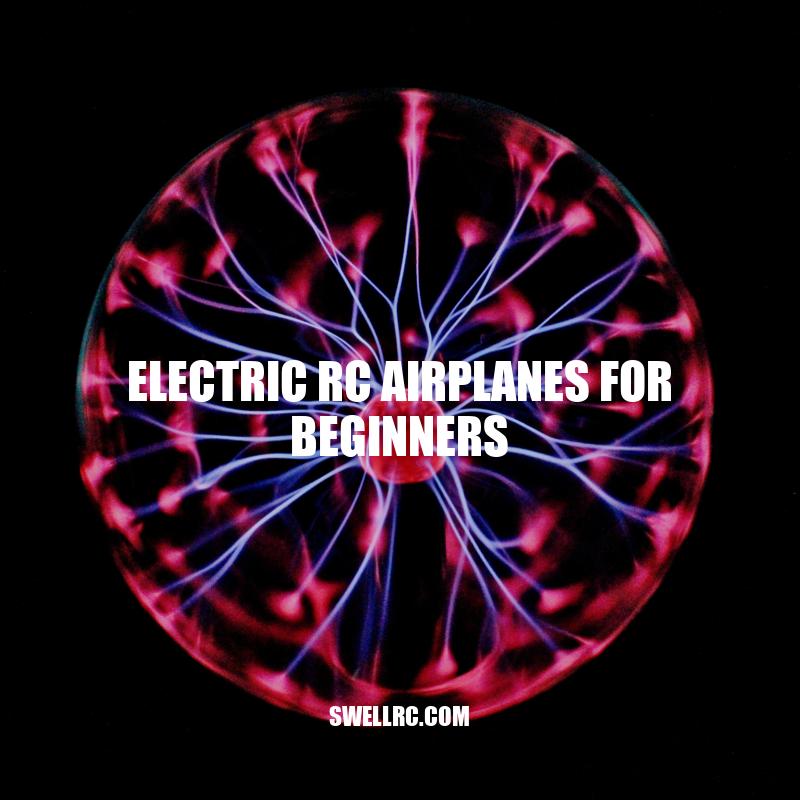Electric RC Airplanes: A Beginner’s Guide
Electric RC airplanes are a great hobby for beginners who are interested in remote-controlled aircraft. These airplanes are easy to maintain, affordable and come in different sizes, shapes and styles. However, it is essential to understand the basics of flying RC airplanes before purchasing one to avoid frustrations and accidents. Electric RC airplanes offer a great introduction to the world of radio control aviation and provide an excellent learning experience for those who are willing to invest time and effort to acquire the stunt abilities. It is crucial to choose the right type of electric RC airplanes that cater to the individual’s interests, skills and level to maximize the benefits. Therefore, it is essential to consider various factors before purchasing an electric RC airplane, including size, power source, control, and experience level. This article aims to provide beginners with a comprehensive guide on electric RC airplanes, including what to consider before purchasing, how to set up the airplane, tips for flying, understanding the range and capabilities, and final advice to ensure a fun and safe RC airplane adventure.
Factors to Consider Before Purchasing an Electric RC Airplane
Before purchasing an electric RC airplane for beginners, it is essential to consider several factors to ensure a great experience. Here are some of the critical factors to keep in mind:
- Experience level: It is essential to choose an electric RC airplane that matches your skill level. Beginners should opt for airplanes with slow speeds, low power, and small sizes.
- Size of the airplane: The size of the electric RC airplane depends on individual preferences and budget. Large airplanes are often expensive and require more space, while smaller ones are more affordable and easy to operate.
- Power source: Electric RC airplanes can run on various power sources such as batteries, nitro engines, or gas. Beginners are advised to start with battery-powered airplanes as they are easy to operate and maintain.
- Control: The type of control system determines the airplane’s responsiveness to the pilot’s commands. Beginners should opt for airplanes with simple control systems.
- Ready-to-Fly or Kit: Electric RC airplanes are available in two main types; Ready-to-Fly (RTF) or kit. RTF airplanes come with all the necessary equipment installed and ready to use, while kits require assembly and customization.
It is important to do proper research and seek advice from experienced flyers before purchasing an electric RC airplane for beginners. Websites such as RCGroups.com and HorizonHobby.com provide valuable resources, including forums, articles, and reviews, to help beginners make informed decisions.
How to choose RC plane electronics?
To choose RC plane electronics, consider the following factors:
- Type of RC plane
- Size and weight of the plane
- Experience level of the pilot
- Battery power required
- Range of control needed
- Budget
Additionally, research the electronics available from reputable manufacturers such as Spektrum, Futaba, and FrSky. Read reviews and compare features to find the best fit for your individual needs. Popular websites for purchasing RC plane electronics include Horizon Hobby, HobbyKing, and Amazon.
| Brand | Features | Price Range |
|---|---|---|
| Spektrum | Wide range of controllers, receivers, and transmitters | $50-$300+ |
| Futaba | High-end controllers and receivers with advanced features | $100-$800+ |
| FrSky | Budget-friendly controllers and receivers with reliable performance | $20-$200 |
How to Set Up an Electric RC Airplane
If you’re a beginner looking to get into electric RC airplanes, it’s crucial to set it up correctly. Here are the basic steps to follow:
- Unpack and assemble: Unpack the airplane and all its components, then assemble it according to the manufacturer’s instructions.
- Install the battery: Install the battery in the designated slot and connect it to the airplane’s receiver. Ensure that the battery is correctly charged and of the appropriate type for the airplane.
- Test the controls: Turn on the transmitter and receiver and test all the controls to ensure that they are working correctly.
- Calibrate the controls: Calibrate the controls to ensure they respond correctly to the pilot’s commands.
- Perform a range check: Perform a range check to ensure the airplane’s radio signal is working correctly and safely.
- Perform a control surface check: Check the control surfaces and ensure that they are correctly positioned and working correctly.
Proper electric RC airplane set-up is essential for smooth and safe flying. Websites such as FliteTest.com provide a wealth of resources on airplane set-up and maintenance. Additionally, investing in high-quality products such as the E-flite Apprentice S 15e RTF airplane can significantly simplify the set-up process and save time.
Electric RC Airplane Wiring Diagram
Here is a basic wiring diagram to guide you during the set-up process:
 |
How do RC plane electronics work?
RC planes work by utilizing radio signals to control their movements. The electronics in an RC plane are responsible for receiving those radio signals and translating them into physical actions such as moving the servos to adjust the wing flaps or throttle. Here are some key components of RC plane electronics:
| Component | Description |
|---|---|
| Transmitter | A handheld device that sends radio signals to the plane |
| Receiver | Located in the plane, receives the radio signals from the transmitter |
| Servos | Small electronic motors that move control surfaces on the plane such as wing flaps or rudder |
| Electronic Speed Control (ESC) | Controls the speed of the motor |
| Battery | Provides power to the motor and electronics |
If you’re interested in learning more about RC planes and their electronics, there are many websites that offer helpful resources. One such website is RCGroups.com, which has an active community of RC enthusiasts who share tips and advice on building and flying RC planes. Additionally, websites such as TowerHobbies.com offer a wide selection of RC plane electronics and other products for hobbyists of all skill levels.
Understanding the Range and Capabilities of Electric RC Airplanes
As a beginner, it is essential to understand the range and capabilities of electric RC airplanes. These factors can significantly affect the safety and success of your flying experience.
The range of an electric RC airplane depends on its radio signal and battery capacity. Typically, an airplane’s radio signal range can range from a few hundred feet to a mile. It is crucial to keep the aircraft within a safe distance to avoid accidents or the signal going out of range. Additionally, battery capacity affects the airplane’s flight time and range. It’s essential to choose a battery with the appropriate capacity for your airplane to ensure a safe and enjoyable flying experience.
Electric RC airplanes are also available in various sizes, ranging from small foam planes to large balsa wood models. The larger the aircraft, the more weight it can carry, and the more powerful the motor will need to be. It is vital to consider the weight and power of an electric RC airplane before purchasing one to ensure that it can carry the components necessary for a safe and successful flying experience.
In conclusion, understanding the range and capabilities of electric RC airplanes is crucial for beginners. Proper airplane set-up and choosing the appropriate type of aircraft can significantly affect the safety and enjoyment of your flying experience. It’s essential to take the necessary steps to ensure that you have a successful and safe flying experience.



